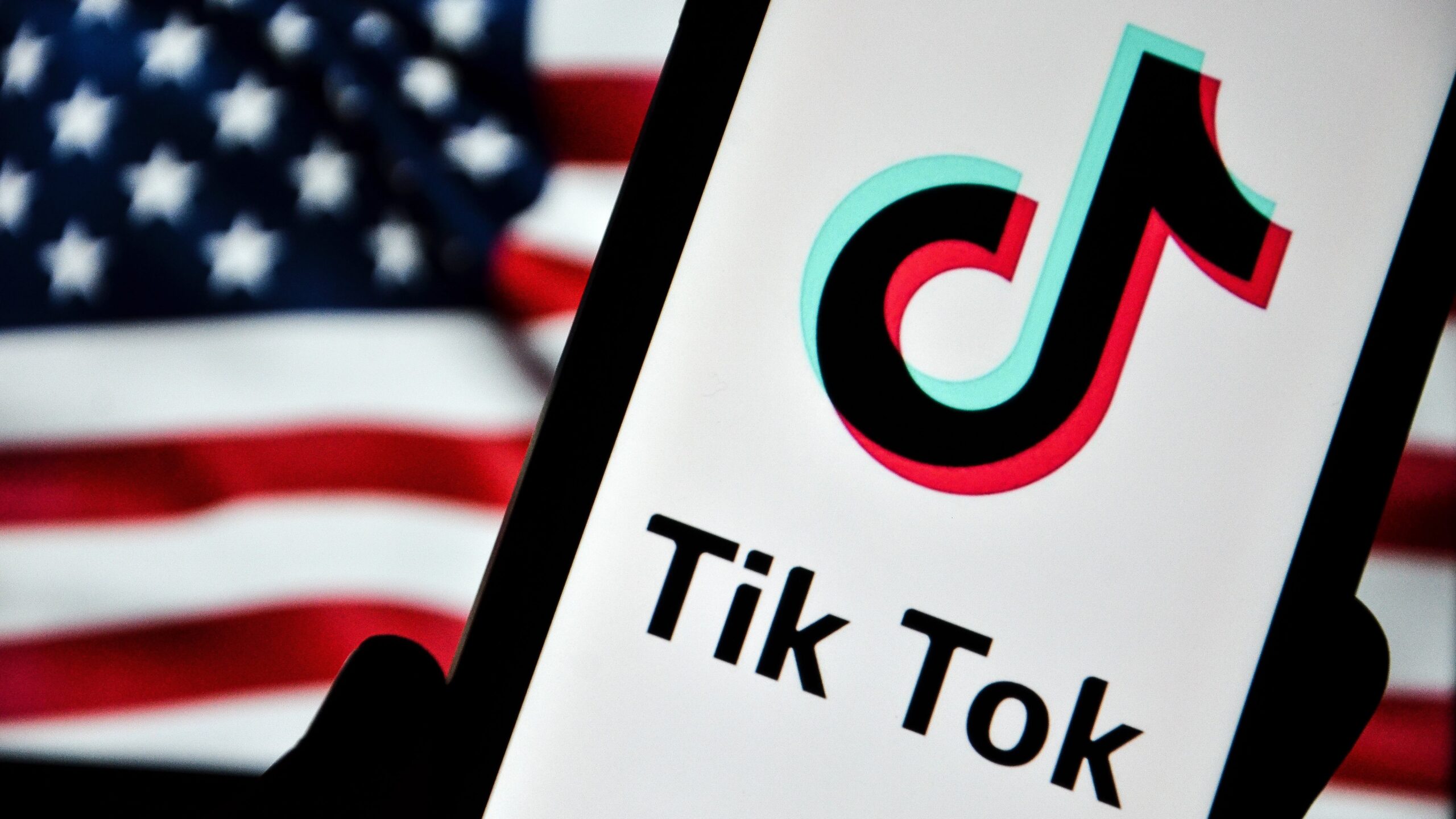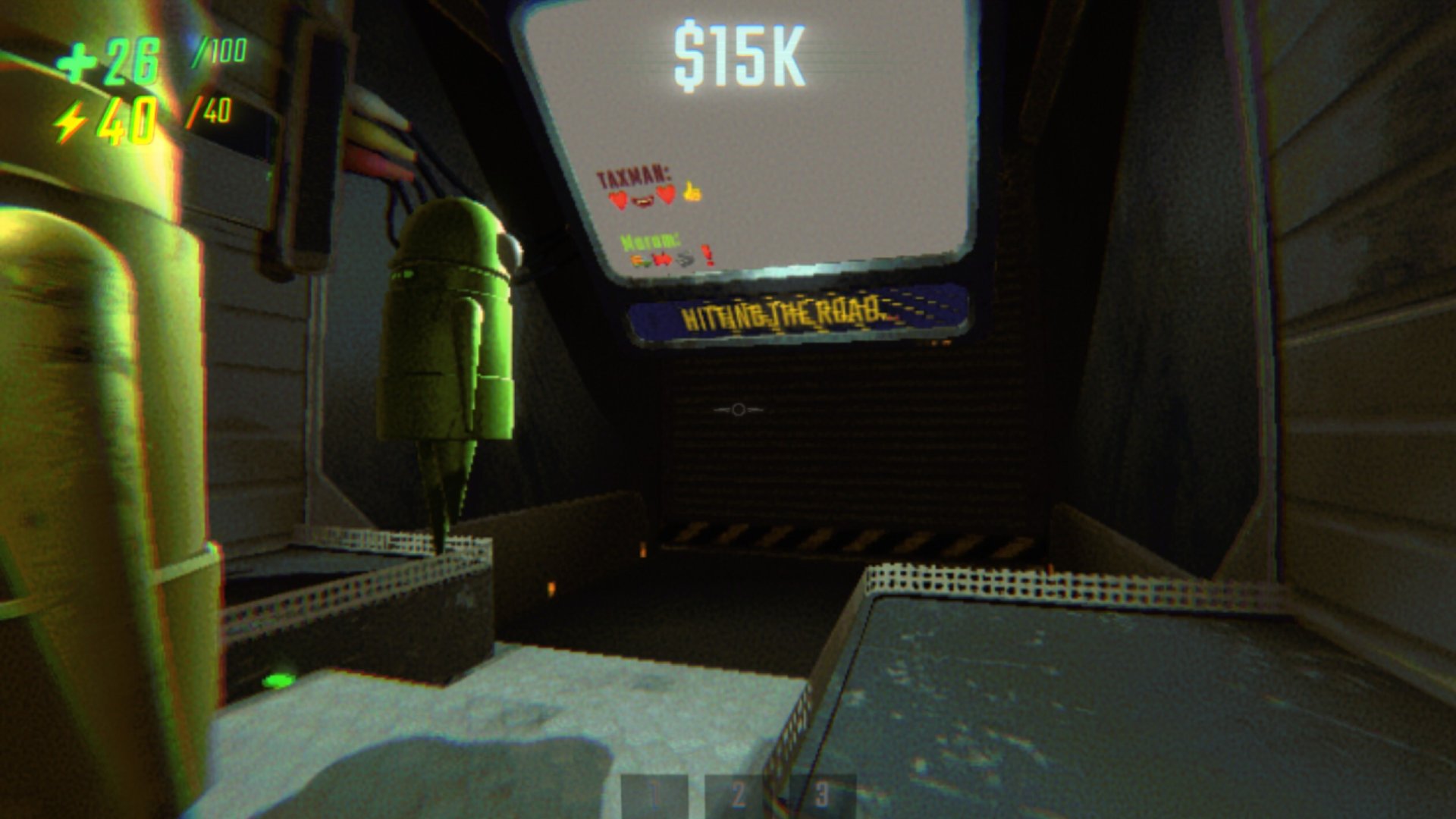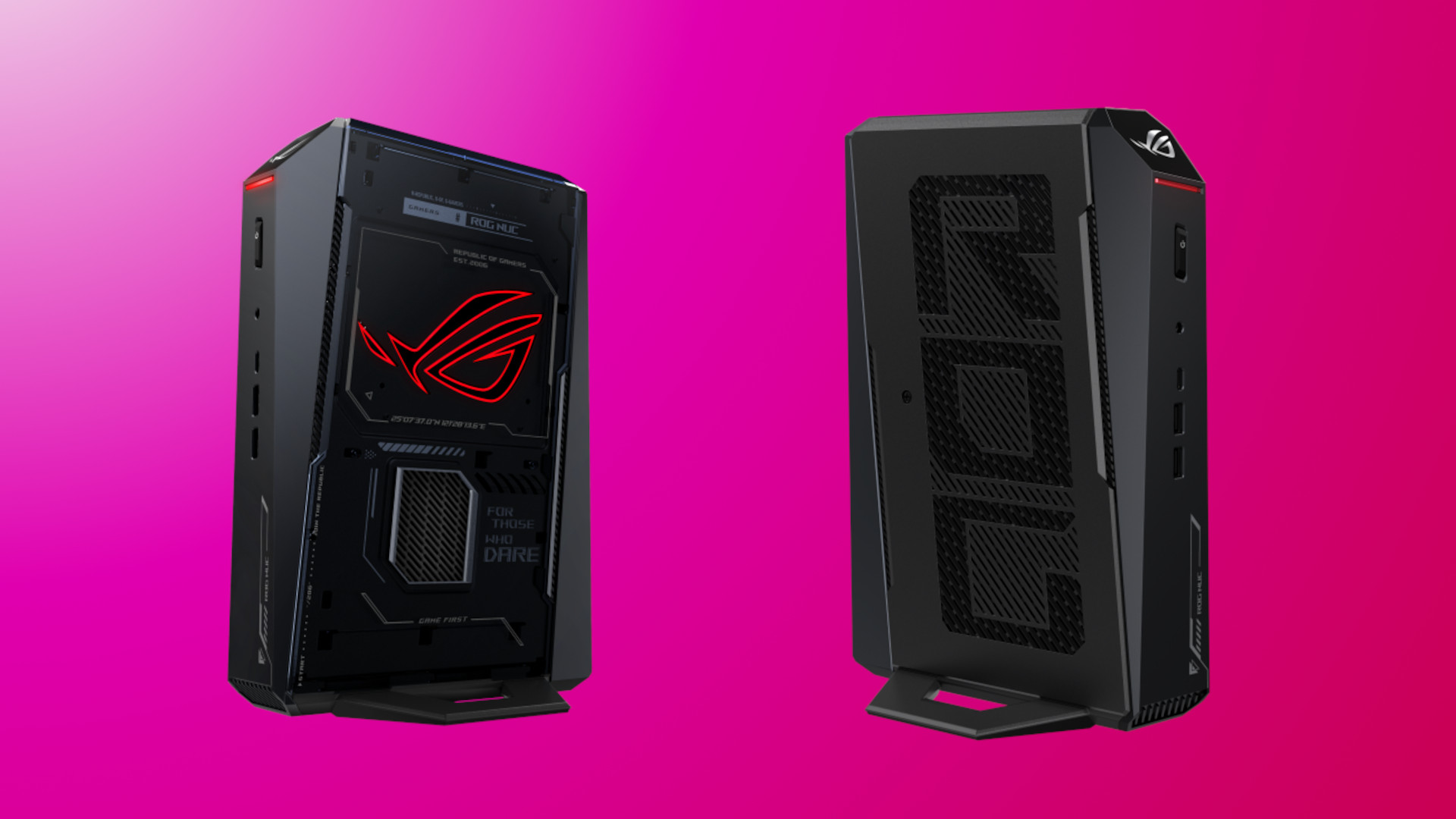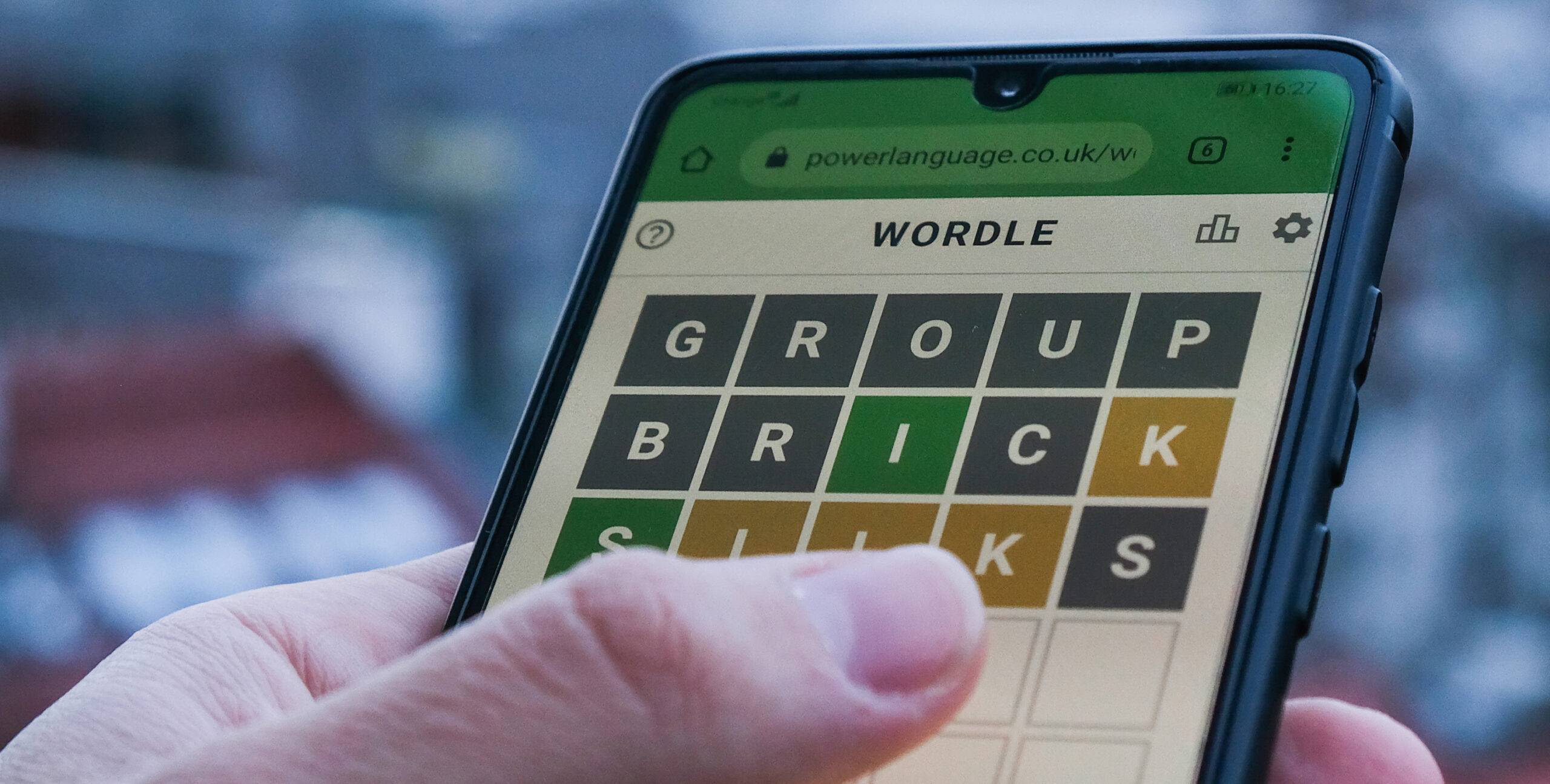And just like that, TikTok is back online. The popular short video app went dark in the US on the night of January 18 following a ban on the app being upheld by the US Supreme Court. TikTok’s owner, ByteDance, says it has been in communication with the incoming Trump administration, and feels confident enough in its policy stance to reinstate access in the United States.
“In agreement with our service providers, TikTok is in the process of restoring service,” the company wrote in a post on Twitter. “We thank President Trump for providing the necessary clarity and assurance to our service providers that they will face no penalties providing TikTok to over 170 million Americans and allowing over 7 million small businesses to thrive.
STATEMENT FROM TIKTOK:In agreement with our service providers, TikTok is in the process of restoring service. We thank President Trump for providing the necessary clarity and assurance to our service providers that they will face no penalties providing TikTok to over 170…January 19, 2025
“It’s a strong stand for the First Amendment and against arbitrary censorship. We will work with President Trump on a long-term solution that keeps TikTok in the United States.”
Anecdotally, I can confirm access to the app from the United States just an hour after TikTok shared its statement. President-elect Trump shared his own statement on the matter a half-hour prior to TikTok’s on Truth Social, the right wing alternative to Twitter owned by Trump Media & Technology Group.
“I’m asking companies not to let TikTok stay dark,” Trump truthed in a truth on Truth Social. “I will issue an executive order on Monday to extend the period of time before the law’s prohibitions take effect, so that we can make a deal to protect our national security. The order will also confirm that there will be no liability for any company that helped keep TikTok from going dark before my order.”
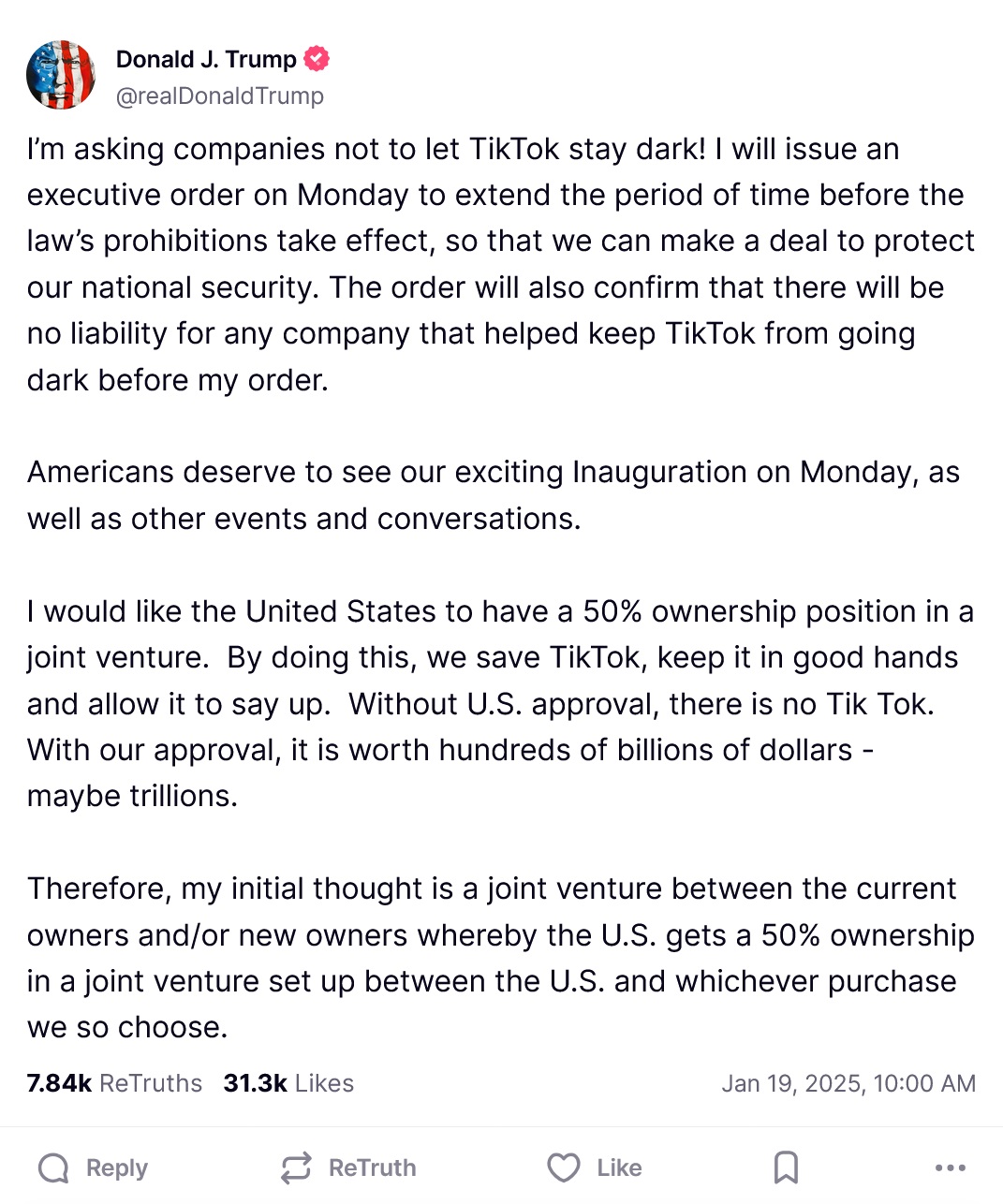
The TikTok ban currently (not quite) in effect was passed by the US House last March, and it cleared the Senate attached to a $95 billion foreign aid package. President Biden signed it into law, and TikTok’s legal challenge was ultimately defeated in the Supreme Court, paving the way for the ban to take effect on January 18.
A similar proposal was first enacted as an executive order by Trump at the tail end of his first term, with vague national security fears about the data collected by Chinese parent company ByteDance eventually garnering bipartisan support—concerns of ubiquitous domestic surveillance by US-based companies, by contrast, have been more of a nonstarter for the US government. We have thus come full circle, with a TikTok ban passed by Trump, reversed by Biden, revived by Congress, passed by Biden, and finally thwarted by Trump as he begins a second term in office.
It’s unclear what Trump meant by the US having “a 50% ownership position in a joint venture”—a private company taking the stake would make the most sense, but Trump’s wording seems to imply a direct US government stake in the company. I also don’t know if ByteDance is actually on-board with this long-term plan, judging by its Twitter post, but having to sell a substantial ownership stake rather than divest itself of the full company is already a more favorable arrangement for the social media giant.







